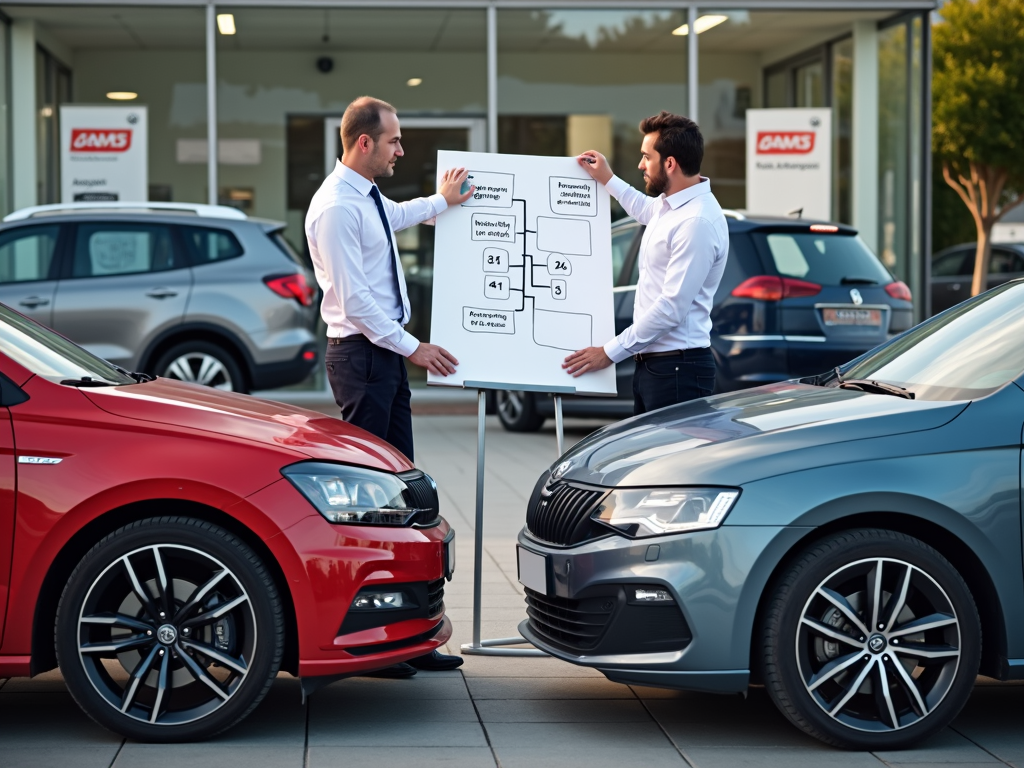The decision regarding the right vehicle financing is akin to a journey through a dense financial jungle. The choice between installment loans, balloon financing, and leasing is not just a matter of financial budget, but also a strategic decision. This article highlights the essential differences and advantages of various options, providing investors and private savers with a solid foundation to choose the right financing strategy for their vehicle.
Installment Loan or Balloon Financing: Finding the Best Solution for Your Car

When it comes to choosing the best financing option for purchasing a car, potential buyers often find themselves faced with the choice between a installment loan and balloon financing. These two options offer different advantages and disadvantages in financing that can influence the decision-making process.
An installment loan is a widely used method, where the entire purchase price of the vehicle is repaid with consistent monthly installments. This consistency in the monthly burden allows for clear budget planning. Since the rates are fixed, there are no surprises at the end of the term, as no final amount is required. Additionally, many creditors offer the possibility of early payments, allowing for quicker reductions if financial margins allow. Presenting oneself as a cash buyer at the dealership with such a loan can also facilitate discounts. On the downside, monthly payments are often higher compared to other forms of financing, as the entire purchase price needs to be repaid, which reduces flexibility in monthly expenses.
In contrast, balloon financing offers a mix of lower monthly installments and a larger final payment at the end of the contract term. This structure can be attractive for buyers who want to keep their monthly financial exposure low. With this type of financing, no down payment is typically required, and it offers flexibility for individuals who anticipate a future increase in their income, which could help cover the high final installment. A potential downside is the reliance on follow-up financing options for the final payment, which are often not offered at especially advantageous costs, resulting in higher overall financing costs.
To make an informed decision between these two types of financing, potential buyers should carefully assess their individual financial situations and future income developments. A comparison of total costs shows that while balloon financing allows for lower monthly costs, a significant payment is still required at the end, which could become a burden. In contrast, an installment loan creates an environment of transparency and financial security. Ultimately, the decision depends on each buyer’s personal life planning and financial priorities.
Leasing or Purchase: The Right Strategy for Your Car Financing

The choice between leasing and purchasing a vehicle is an important decision that depends on several key factors. Both options offer individual advantages and disadvantages, depending on personal preferences and financial conditions.
Leasing Options and Their Advantages
Leasing a car often provides a more flexible solution for those who enjoy frequently changing vehicles. With flexible contracts ranging from 12 to 60 months, leasing allows one to return the vehicle at the end of the term or purchase it at a previously agreed residual value. One of the main advantages is that the risk of depreciation does not fall on you as the car remains owned by the leasing company. This can be particularly appealing, as the monthly costs for leasing are generally lower than for a loan, since you only cover the depreciation during the leasing period. Additionally, new car warranties reduce repair costs.
The Downsides of Leasing
Despite the advantages, there are also some disadvantages to consider for those with a long-term view. Firstly, you do not acquire ownership, which means that at the end of the contract you must return the car unless you choose to buy it. Additionally, there are often mileage limitations included in the leasing contract; excess miles can incur additional costs. Finally, leasing typically requires full insurance coverage, which can increase overall expenses.
The Classic Auto Loan as an Alternative
In contrast, an auto loan allows for the immediate purchase of the vehicle. This can be important for those who value freedom and plan to use the car long-term. Aside from the advantage of flexible use without mileage limitations, you also have the option to pay off the loan anytime with early payments. This can potentially reduce interest costs and allow you to enjoy the ownership of a fully paid car.
The Challenges of Auto Loans
A significant downside can often be the higher monthly payments compared to leasing. Additionally, the risk of depreciation falls on the borrower, which can be particularly relevant for new cars. With the expiration of the warranty, potential repair costs also increase, along with the commitment of having to sell the car yourself when it is no longer needed.
Decision: An Individual Approach
The right decision depends heavily on personal goals and financial needs. For individuals on a tight budget, who prioritize low monthly payments, leasing offers an attractive solution. If ownership and long-term freedom are important, an auto loan may be the better path. Use online platforms to recognize the best conditions and compare carefully to make the most financially sensible choice.